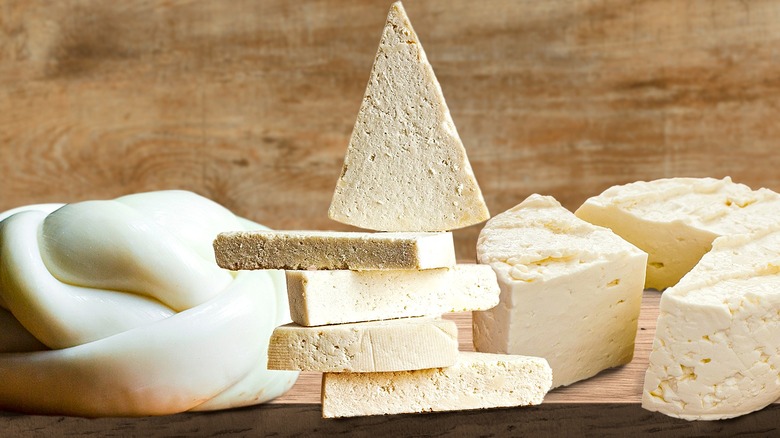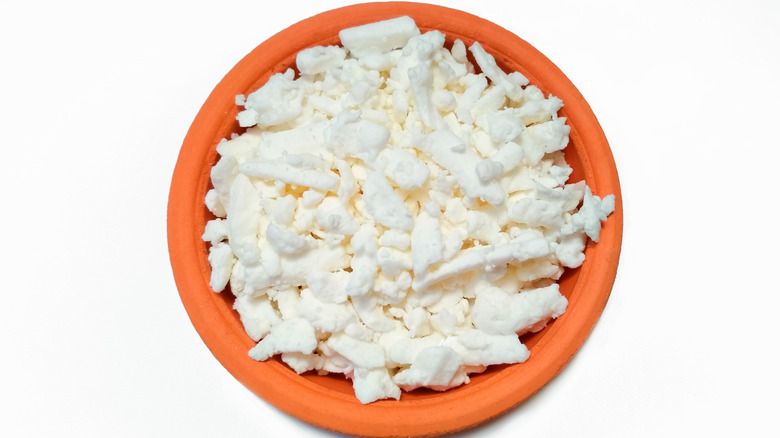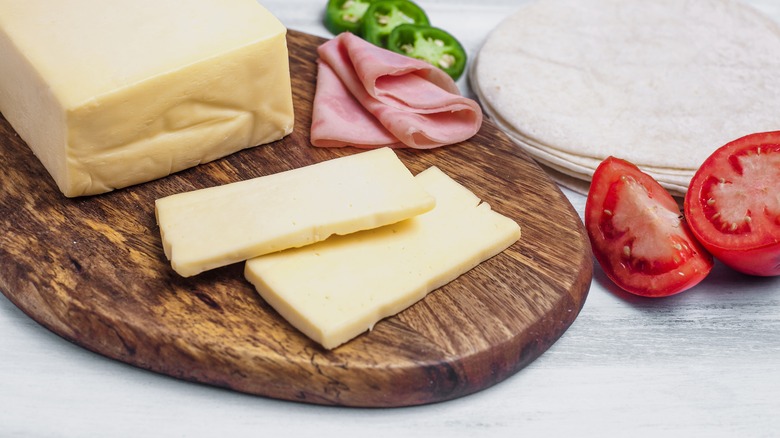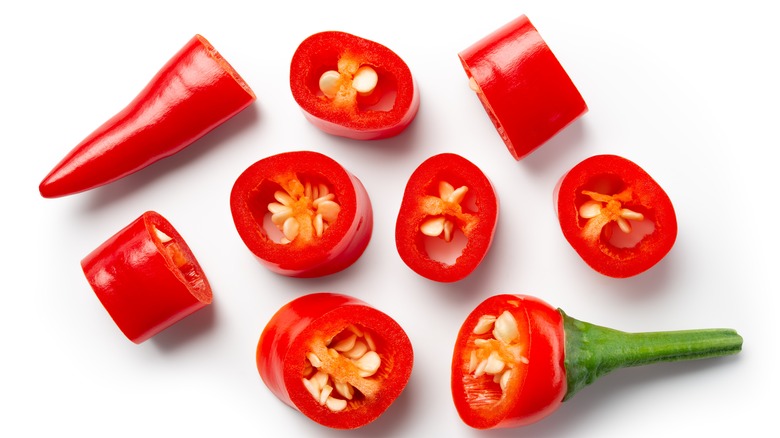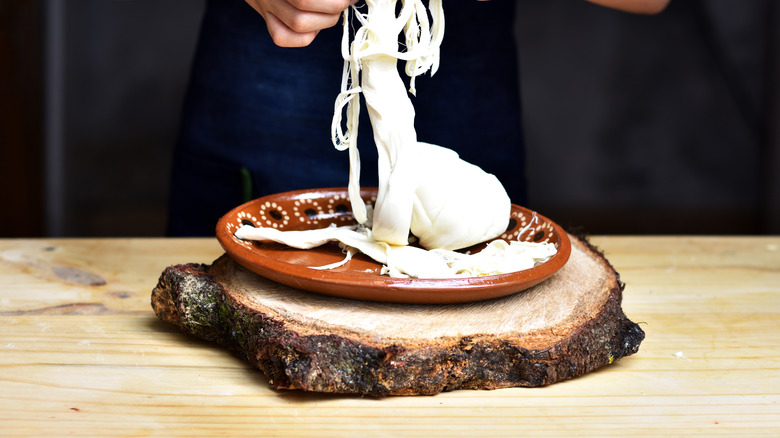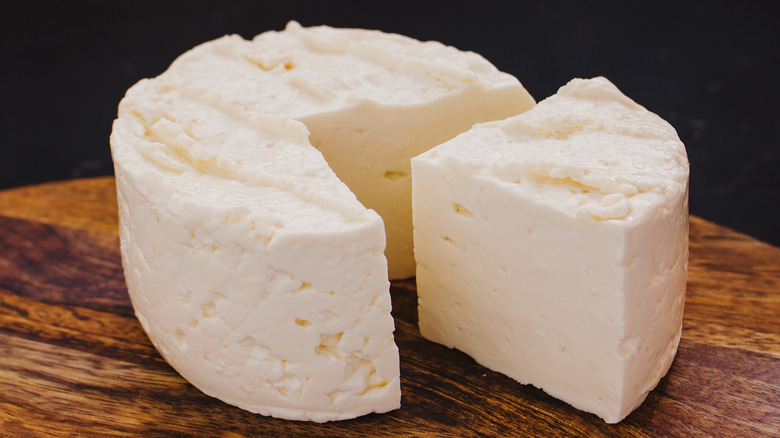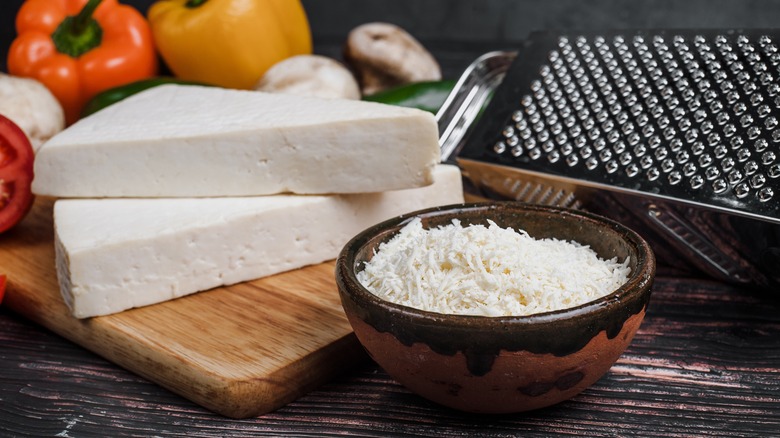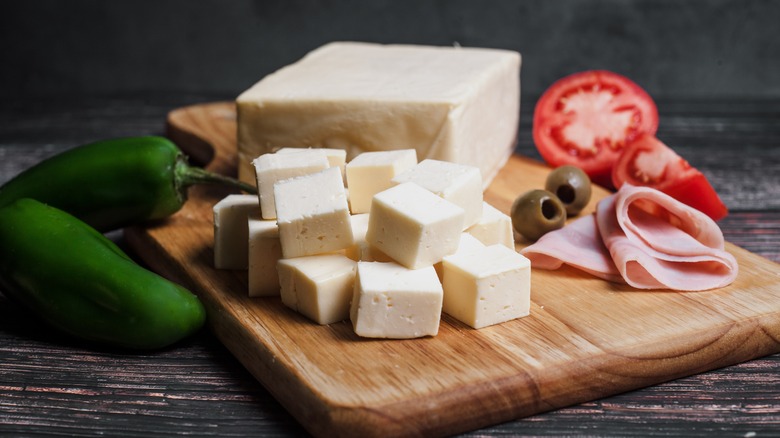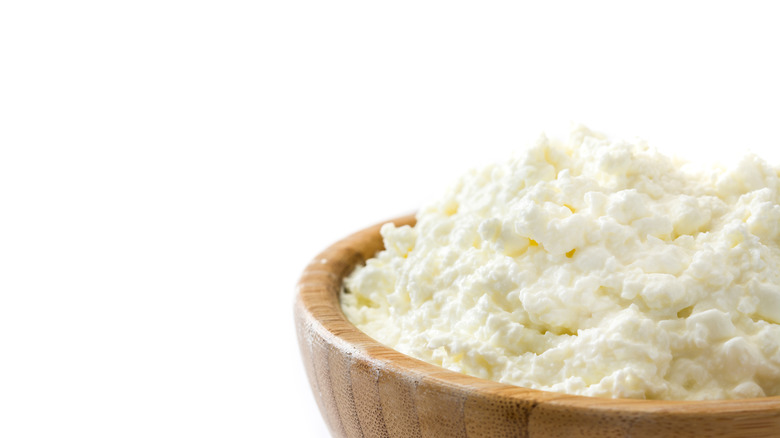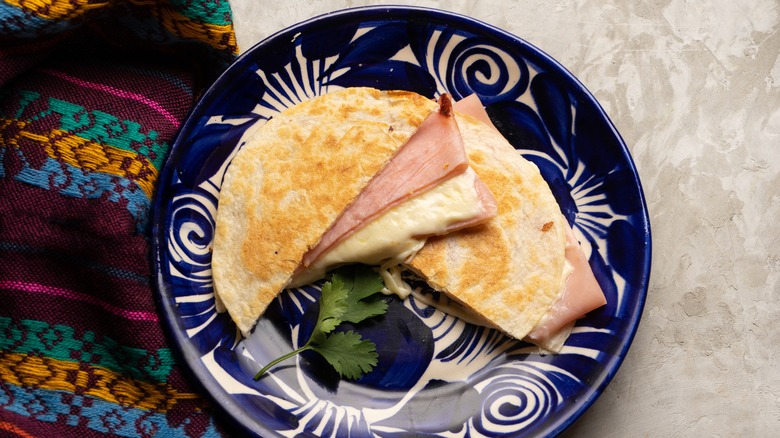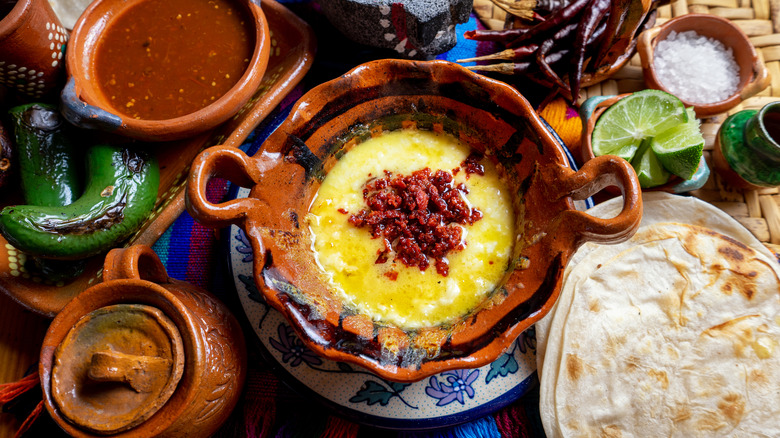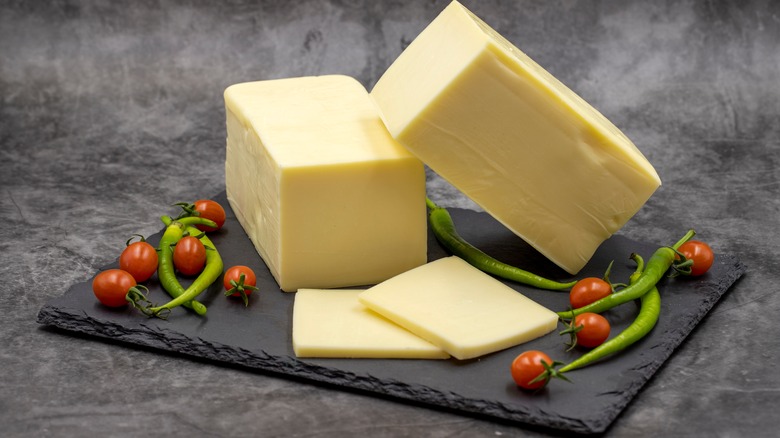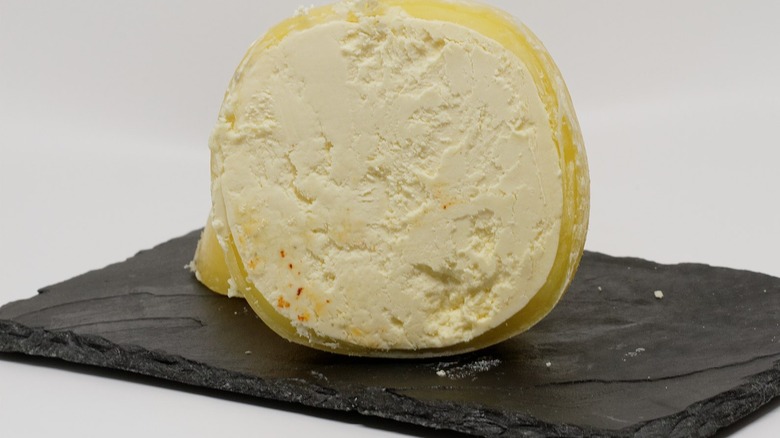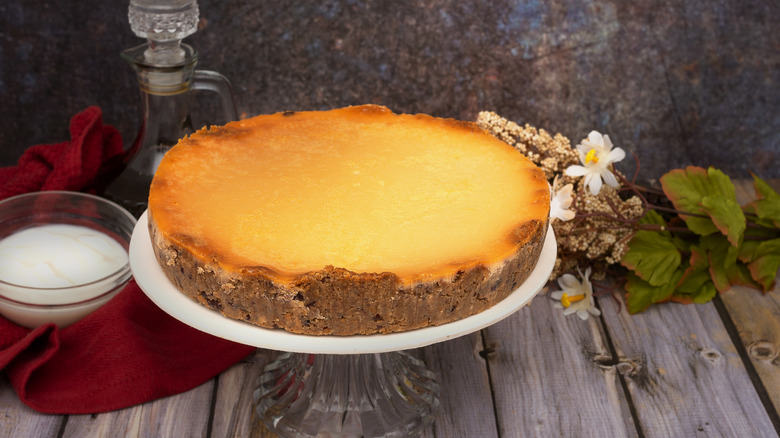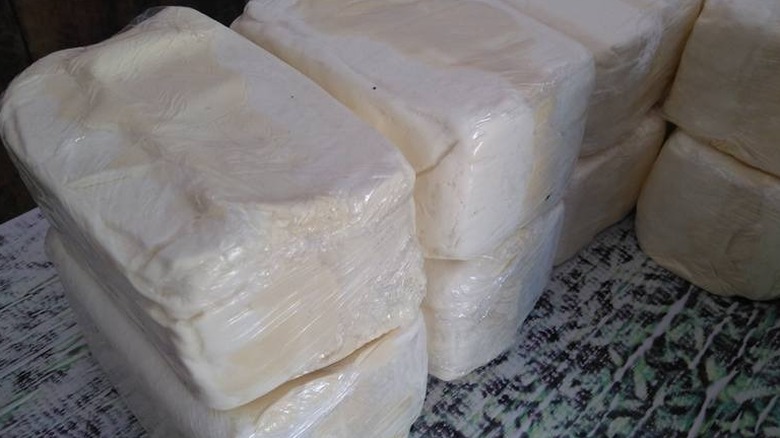Mexican Cheeses: The Ultimate Guide
Mexican cuisine is rich and varied, as exemplified by the sheer number of different taco fillings, moles, and more you'll find across the country. But despite boasting just as varied a selection of cheeses, most experts agree that Mexican queso is phenomenally misunderstood abroad.
"I feel that outside of Mexico and even inside Mexico, we think about only four varieties of cheese," says Chef Carmen Miranda of Tacombi. Cheese Expert and Judge Carlos Yescas, founder of Cheese Spelunker Tours, agrees, noting that "Mexico has a diversity of climates and cheese is made almost in every region, so each area has its own terroir and own cheese."
More than just variety, Mexico is also home to phenomenal quality in cheese — something often lost to those familiar with industrialized versions of these otherwise excellent products.
"It is indeed disheartening that industrialization has led to the prevalence of fake, yellow-colored cheeses popularized under 'Mexican cheeses,'" explains Isabel Coss, the Pastry Chef at Lutèce and a native of Mexico City. "These cheeses often lack flavor and have a plastic-like texture, primarily suitable for melting in quesadillas."
"I think like almost every subject about Mexican cuisine, what people get wrong is the quality, intention, and integrity the citizens of Mexico have put into creating their cheeses," echoes Executive Chef Blaine Welsh of Destination Unknown Restaurants.
According to our experts, here are the must-try Mexican cheeses from coast to coast.
Queso fresco
Queso fresco is perhaps one of the best-known Mexican cheeses, beloved for its fresh flavor and crumbly texture. But its renown may well be due to the fact that it's not a type of cheese but rather a category encompassing cuajada, panela, queso de rancho, botanero, obadera, queso de aro, queso del tenate, and more. The defining characteristics of queso fresco include aging time — Yescas explains that it is meant to be consumed within two weeks of production — as well as certain flavor components. For Coss, the category refers to "non-aged, non-melting, and lightly salted cheeses."
"One way to distinguish these cheeses is that they may come with a little whey in the package and they have a light texture when eaten," says Coss.
If the category is so frequently referenced rather than individual cheeses, Yescas explains, it's largely because in Mexico, as in many Latin American countries, cheese is normally perceived as an ingredient rather than a product in situ, as, for example, in France. "Cooks referred to a cheese by its aging to explain the overall texture and flavor of a cheese and how it should be used in cooking," he explains.
Coss loves queso fresco, noting that while some underestimate it due to its youth, at its best, it "should retain its incredible dairy taste and be fresh." When wrapped in fresh herbs, baked, and drizzled with fresh salsa, she adds, "it becomes the most delightful and satisfying food one can enjoy."
Queso añejo
For Yescas, one of the biggest misconceptions about Mexican cheeses is that all of them are fresh. But standing in stark contrast to queso fresco is another category, that of queso añejo.
"Añejo means aged," he explains, "and it describes a cheese matured for over three weeks. Normally this cheese is drier. Many cheeses are considered añejos depending on where in Mexico you are."
"Anejo isn't necessarily a category, but more of a fact," adds Welsh. "It is cheese that is aged. Paradoxically, queso añejo can also refer specifically to queso fresco that has been aged. So it really depends on the context in which añejo is being used."
Depending on the region, then, queso añejo may refer to cheeses like chihuahua, adobado, manchego, cotija, or botanero — some of which, somewhat confusingly, can also be produced in fresh form. Depending on which añejo you're using, most will have more flavor and less moisture than queso fresco. Indeed, according to Coss, "These cheeses are perfect for adding flavor and giving contrast to certain dishes."
Queso enchilado
Queso enchilado is yet another category of cheese named for the chiles that flavor it, which lend a "smoky and spicy strong taste," according to SOL Mexican Cocina Executive Chef Samantha DeLeon. Generally speaking, such cheeses will be covered in a red chile paste, which may or may not also contain vinegar, garlic, or even paprika. This technique preserves the cheese in addition to lending it delicious flavor.
Many cheeses can be treated in such form, including queso criollo, queso de Tepehuanes, queso de tetilla, queso sierra, and queso refregado. Coss loves fresh, flavorful adobado, which "creates a perfect canvas for enhancing the umami flavors of chiles." One of DeLeon's favorites in this category, meanwhile, is queso de cincho Guerrero, a cheese native to Guerrero y Morelos that is coated in a spice paste made from fruity guajillo chiles. In addition to Guerrero, queso de cincho is made in Chiapas and Morelos forms, with Chiapas being the most mature followed by Morelos, which is also sometimes called criollo or asadero. DeLeon compares Guerrero, the freshest of the three, to cotija, yet another beloved Mexican cheese.
Queso Oaxaca
Queso Oaxaca is "probably the best-known Mexican cheese outside of Mexico," according to Yescas, who notes that it's popular not just in the U.S., but also in Canada, Spain, and even in India, where local producers have begun making the pulled-curd cheese themselves.
"It consists of salted cheese curds that can be pulled like noodles and shaped into a ball, similar to a rubber band," says Coss, who dubs this southern Mexican cheese "a prominent highlight of the local cuisine."
It also goes by the name quesillo or quesillo de hebra, a name referencing its thread-like appearance. But according to Yescas, seeing as it was popularized both in Mexico and in the U.S. by folks from the state of Oaxaca, it picked up the name — and it stuck.
"It is a cheese that is easy to melt, eat as a snack, and is relatively easy to make at home and by companies around the world," says Yescas.
Coss agrees that this cheese is the best-known Mexican cheese abroad.
"When consumed fresh," she says, Oaxaca "is an incredibly delicious cheese."
Queso panela
A member of the broader category of queso fresco, panela is a fresh cottage cheese also known as queso canasta or queso de la canasta, a name that refers to its basket-like appearance. Mild and soft, it's usually eaten within the week it's made, according to Yescas, and is similar to paneer or halloumi in that it can be seared or heated without ever melting or losing its shape. Indeed, DeLeon likes searing it like halloumi to add great texture to dishes, but that's far from the only way in which it's enjoyed.
"Depending on the region of Mexico, it can be eaten as a botana (snack), in tortas (sandwiches), stuffed in chiles, broken up on top of refried beans, in tacos, or grilled," says Yescas. "It is an inexpensive cheese that is liked by almost everyone for its versatility."
In addition to its plain form, panela may be sold seasoned with garlic or pepper paste. It's no wonder this cheese is so beloved among our chefs, including Coss, who dubs it her "desert island" Mexican cheese. "Queso panela forever!"
Cotija
Cotija is a cow's milk cheese from the state of Michoacan that DeLeon dubs Mexico's best-known cheese, given its prevalence in Mexican restaurants around the world.
"We like to use it at SOL Mexican Cocina in a lot of our dishes like our Guacamole Granada, salads like our Shrimp Salad Esquites, and of course our tacos and burritos."
Miranda, too, loves using it in cooking, noting that when shredded and crumbled it's the perfect pair for esquites, sopes, and chilaquiles, and Coss notes that it's commonly used in street food in central Mexico thanks to its practicality, noting it adds "balance to any delicious masa dish found on the streets."
Welsh echoes DeLeon in noting that cotija is "definitely" the best-known and most beloved in Mexico, noting that when aged, it is comparable to Parmigiano-Reggiano in both texture and flavor.
"What's so interesting about this cheese is that the process of making it today is similar to when it was created," he explains. "It has a minimum aging time of 100 days and is sometimes aged up to a year. It is a cheese that is still made by hand. So while there are similarities in the way it must be produced, every cheese is unique."
And while Yescas says that cheese boards are less common in Mexico than in other parts of the world, he adds, "I do think Mountain Cotija should be in a nice board paired with bee or agave honey."
Queso Chihuahua
Queso Chihuahua, according to Miranda, was first crafted by Mennonites who arrived in the northern Mexican region of Chihuahua beginning in the 1920s. While most of the production is now industrialized, there are still some artisanal producers of true Menonita cheese in the town of Cuauhtemoc, and the broader category has since become a beloved regional specialty that Coss says many northerners "swear by," in large part thanks to its versatility.
"This cheese is rich and can be enjoyed either melted or sliced," she says. "It complements big steaks or makes for a satisfying snack."
DeLeon agrees, noting this cheese is ideal when cooked. "It holds well with heat and isn't too overpowering," she says. "It's mild, melts easily, and goes with everything."
It's not for nothing that, according to Miranda, this cheese is now a favorite of taqueros, who use it to make cheese crusts and chicharrón de queso, a crispy, cheesy treat whose name translates to "cheese cracklings."
Requesón
With a texture somewhere between that of ricotta and cottage cheese and a lactic, mildly salty flavor, requesón could be considered the Mexican answer to Italian ricotta or Corsican brousse. This mild, creamy cheese is one of Welsh's favorite Mexican cheeses for cooking — and, indeed, he dubs it his "desert island" Mexican cheese.
"It just bakes so well," he says. "It has a perfect balance of sweet and salty, and it very rarely loses its texture."
He's a particularly big fan of this cheese as a filling for baked pasta dishes with Mexican flavors, but it's also lovely as a filling for enchiladas. Requesón can even be enjoyed for dessert, for example, paired with fresh berries or stone fruit or as a filling for sweet crêpes, perhaps drizzled with a touch of Mexican chocolate. Essentially, anywhere you'd consider using ricotta, requesón would be the ideal stand-in.
Queso asadero
Queso asadero is a cheese that gets its name from the way it's used: Evoking the grill or rotisserie with which it shares its name, this cheese hailing from northern Mexico is one of Welsh's favorites.
"I love queso asadero," he says. "It has a similar flavor and qualities as Monterey Jack, but with a little more salt. It's a nice, roastable cheese."
Queso asadero is also sometimes known as quesillo or trompillo, the latter of which refers to a member of the nightshade family also dubbed the prairie berry or the silver-leaved nettle. The trompillo was traditionally used to curdle the milk in place of animal rennet.
Queso asadero is known for its elasticity and is perfect in dishes that would only be improved by a bit of cheese pull: Think quesadillas, enchiladas, or queso fundido, but also pizza, casseroles, or grilled cheese. Its mild flavor and irreplaceable texture are sure to add a moreish quality to your favorite recipes.
Manchego
Don't be surprised to see manchego on this list: While the term evokes a Spanish ewe's milk cheese for most, Mexico also boasts its own manchego. The two cheeses, however, couldn't be more different.
"Mexico's version is semi-firm, rindless, and becomes gooey and stringy when melted," says Welsh. "Spanish Manchego is named after a region and there's different age categories it can fall into."
"Spanish Manchego is made with sheep's milk cheese in three-kilo wheels," adds Yescas. "They are normally aged between three and six months. Mexican manchego is a cow's milk cheese that normally is made industrially in block form and sold at around three to four weeks. Mexican manchego was developed much later than traditional Spanish Manchego; however, they share their name because of colonialism. I think both cheeses have a space in the world."
"This subject is a topic of controversy between Spain and Mexico," says Coss, evoking not just the colonial history but the DPO protecting Spanish manchego, which has led, according to Miranda, to many Mexican manchego producers being forced to label their cheeses "manchego type" to avoid controversy.
"It originated from colonization and adaptation, and it has become a favorite for many due to its melting qualities and unique flavor," says Coss. "Mexico doesn't want to lose or change the name of their cheese, and Spain is protecting their farmers, so only time will tell."
Queso adobera
Adobera is one of the best-known cheeses within Mexico, according to DeLeon, who notes that the mild cow's milk cheese from eastern Mexican Jalisco "is very versatile, which is why it's used daily."
Balanced and smooth in flavor, queso adobera is notably a phenomenal melter, she says, and seeing as it bears no rind, it's easy to use. It's particularly beloved in quesadillas, providing phenomenal texture and a mild backdrop of flavor that allows the chef to flavor the dish with anything from chile to meat, herbs to seafood.
But in addition to being a great cooking cheese, adobera has a place on a Mexican cheeseboard, according to Yescas. He loves pairing it with a spicy accompaniment alongside queso de oveja, aka Mexican sheep's milk cheese, and mountain cotija. Together, he says, this assortment "would show the diversity of flavors and force people to think of Mexican gastronomy as complex, beyond the regular dishes that most people know from Mexico."
Queso Bola de Ocosingo
There are quite a few Mexican cheeses that, according to Yescas, "don't get enough recognition outside of Mexico" — a category that he says includes "basically all Mexican cheeses other than Oaxaca." Specifically, however, he evokes Queso Bola de Ocosingo, a cheese that Coss deems one of her favorites. Known for its creamy texture and spherical shape, she dubs this cheese from the southern state of Chiapas, on the border with Guatemala, "an incredible double cream cheese."
"This cheese is truly special and unique in its taste and consistency," she adds, "providing a remarkable culinary experience."
Queso Bola de Ocosingo would be particularly at home on a cheese plate or platter, she continues, noting that it would add "a luxurious element" to the offerings.
But according to Yascas, this cheese is endangered, "bound to disappear" due to a lack of local support and protection. "It would be nice if people sought it out now," he says, so be sure to seek out a bola whenever you have the chance.
Queso Doble Crema de Cuadro
Queso Doble Crema de Cuadro is a cheese from Chiapas generally made with raw cow's milk. Reinforced with cream, it can reach 75% fat for a luxuriously creamy texture. It's no wonder it's Yescas' favorite cooking cheese thanks to its fresh, lactic aromas, excellent salt balance, and slight sour cream-like flavor.
"The cheese has a nice acidity that is good to match with spicy sauces," he says; it also makes a great base for enchilada or chilaquile fillings, and as it ages, it can be cubed and served on toothpicks as an accompaniment to cocktails. For Yescas, this cheese even works well in cheesecake.
"It is another cheese that is not well-known," he says, "but once people have it they appreciate everything it has going on for it."
It's no wonder it's so popular in its home state, where some experts say it may soon be fast-tracked for a Mexican DPO.
Queso Corazon de Mantequilla
Many Mexican cheeses on this list are beloved for their versatility, but one of Yescas' favorites, Queso Corazon de Mantequilla, is remarkable for its uniqueness. Indeed, this multi-faceted cheese is truly like no other.
"It is a fresh cheese that is made in a block with one side kept natural, the other side mixed with Chile chiltepin and it is fused with soured butter in the middle," he says. "It is truly a unique cheese that is used in celebrations in Chiapas and its production is really limited."
Made artisanally on a small ranch in the village of Pijijiapan, this cheese was traditionally given as a wedding gift, with the butter-joined cheese a symbol of the new union. (Romantic, isn't it?) With a balanced, unique flavor, this creation is not the easiest cheese to find, but if you can track it down, you're sure to fall in love.
